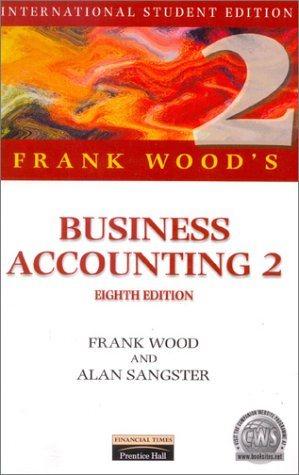Dundas Limited purchased a machine under a hire purchase agreement on 1 January (19 mathrm{X} 8). The
Question:
Dundas Limited purchased a machine under a hire purchase agreement on 1 January \(19 \mathrm{X} 8\). The agreement provided for an immediate payment of \(£ 2,000\), followed by five equal instalments of \(£ 3,056\), each instalment to be paid on 30 June and 31 December respectively.
The cash price of the machine was \(£ 10,000\). Dundas estimated that it would have a useful economic life of five years, and its residual value would then be \(£ 1,000\).
In apportioning interest to respective accounting periods, the company uses the 'sum of digits'" method.
\section*{Required:}
(a) Write up the following ledger accounts for each of the three years to 31 December \(19 \times 8,19 \mathrm{X} 9\) and \(19 \times 0\) respectively:
(i) machine hire purchase loan account; and
(ii) machine hire purchase interest account; and
(b) show the following balance sheet extracts relating to the machine as at 31 December \(19 \mathrm{X} 8\), 19X9 and 19X0 respectively:
(i) fixed assets: machine at net book value;
(ii) creditors: amounts payable within one year - obligation under hire purchase contract; and
(iii) creditors: amounts falling due after more than one year - obligation under hire purchase contract.
"Note - sum of digits This is very similar to the 'rule of 78 ', explained on pp. 672-3. It is explained in detail on p. 378 of the eighth edition of Business Accounting 1. In brief, if a machine is expected to last 4 years, you write-off the cost by weighting year 1 as 4 , year 2 as 3, year 3 as 2 and year 4 as 1 . The total of these weights is used as the denominator. Thus, year 1 depreciation would be \(4 / 10\) of the amount to be written-off; year 2 would be \(3 / 10\), year 3 would be \(2 / 10\) and year 4 would be \(1 / 10\).
Step by Step Answer:






